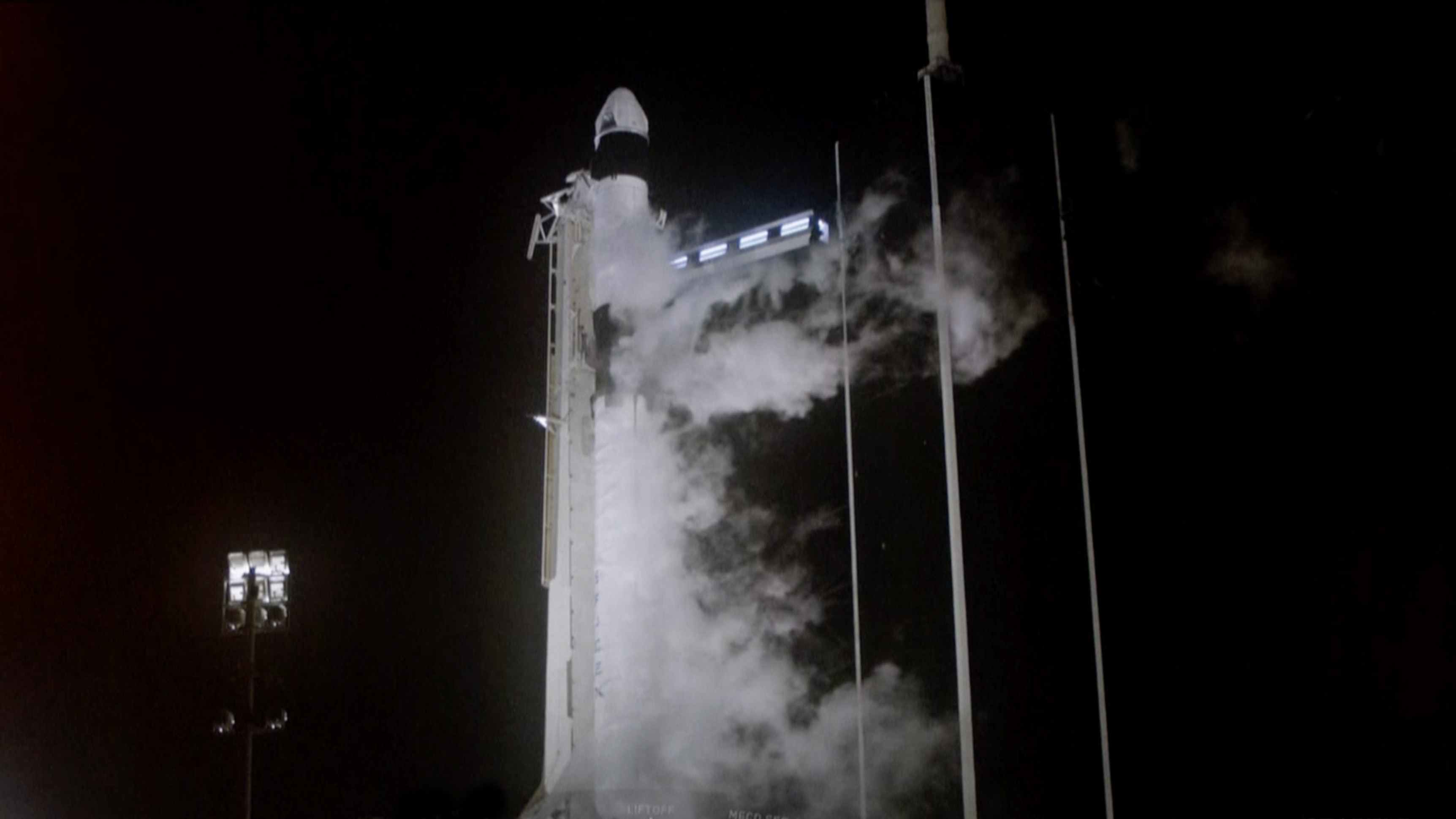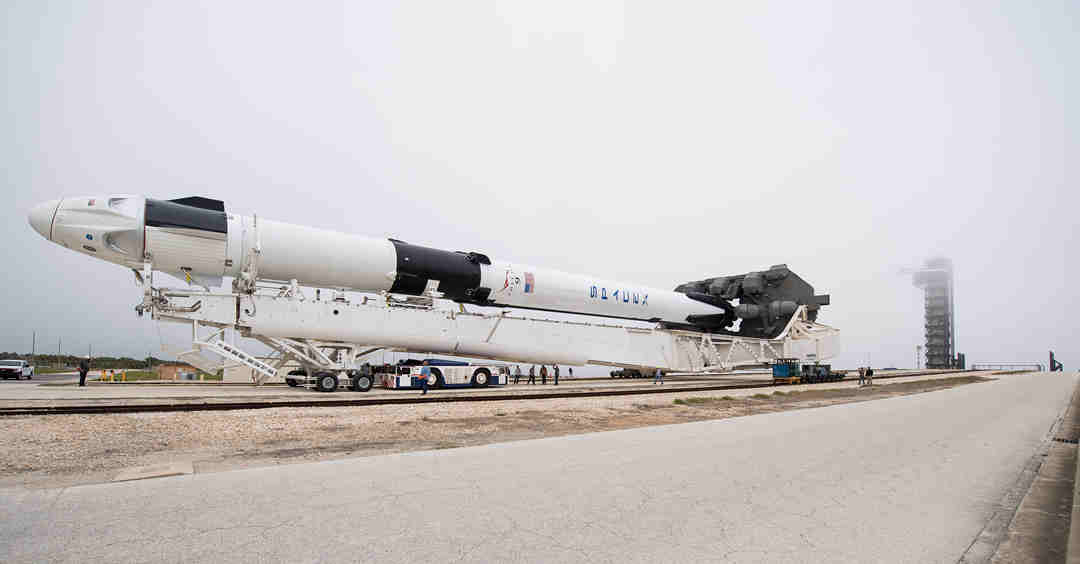
Technology
11:59, 02-Mar-2019
SpaceX's Dragon Crew capsule set for historic test
Updated
21:46, 02-Mar-2019
CGTN
01:04

SpaceX successfully launched an unmanned crew capsule for the International Space Station on Saturday from Florida's Kennedy Space Center at 2:49 a.m. (0749 GMT).
Crew Dragon capsule, the company's very first vehicle designed to carry people to space, is on the verge of flying humans to space, with a critical test flight underway.
The capsule won't carry humans in this test trip. But a dummy in a white Space X spacesuits is inside, used to record data as a future reference for a real astronaut aboard.
The mission, called Demonstration-1 or DM-1, is meant to show NASA that Crew Dragon is safe for future human crew members.
The capsule will also carry about 400 pounds of supplies and equipment to the International Space Station (ISS).
After traveling in orbit for 24 hours, it is scheduled to dock with the ISS on Sunday morning autonomously.
Then it is scheduled to remain attached for five days until March 8, when it will undock from the ISS and return to Earth.

A SpaceX Falcon 9 rocket with the company's Crew Dragon spacecraft onboard is seen as it is rolled out of the horizontal integration facility at Launch Complex 39A as preparations continue for the Demo-1 mission at the Kennedy Space Center in Florida, February 28, 2019. /VCG Photo
A SpaceX Falcon 9 rocket with the company's Crew Dragon spacecraft onboard is seen as it is rolled out of the horizontal integration facility at Launch Complex 39A as preparations continue for the Demo-1 mission at the Kennedy Space Center in Florida, February 28, 2019. /VCG Photo
NASA doesn't expect this crucial shakedown cruise to go perfectly. But the lessons learned should improve safety when two NASA astronauts strap into a Dragon as early as July.
"Giant leaps are made by a series of consistent smaller steps. This one will be a big step!" retired astronaut Scott Kelly, NASA's former one-year space station resident, tweeted Thursday.
Boeing is also in the race to end NASA's eight-year drought of launching U.S. astronauts on U.S. rockets from U.S. soil.
The space agency is turning to private taxi rides to reduce its pricey reliance on Russian rockets to get astronauts to and from the space station. NASA is providing eight billion U.S. dollars for SpaceX and Boeing to build and operate these new systems.
"On a personal level, this is an extremely important mission," SpaceX executive Hans Koenigsmann told reporters Thursday. "And I'm pretty sure it's not just me, I think everybody within SpaceX feels this and wants to get this right."

A SpaceX Falcon 9 rocket with the company's Crew Dragon spacecraft onboard is seen as it is rolled out of the horizontal integration facility at Launch Complex 39A as preparations continue for the Demo-1 mission, at the Kennedy Space Center in Florida, February 28, 2019. /VCG Photo
A SpaceX Falcon 9 rocket with the company's Crew Dragon spacecraft onboard is seen as it is rolled out of the horizontal integration facility at Launch Complex 39A as preparations continue for the Demo-1 mission, at the Kennedy Space Center in Florida, February 28, 2019. /VCG Photo
SpaceX has made 16 space station deliveries over the past seven years. The private company overhauled the cargo Dragon capsule to make it safe – and comfortable – for passengers.
It's slightly bigger – 27 feet (8 meters) tall – and also launches atop a SpaceX Falcon 9 rocket. But now there are four seats, three windows, computer touch screens and life-support systems.
Instead of solar wings, solar cells are on the spacecraft itself. And eight engines are built into the capsule walls for use in an emergency; these abort engines could shoot the capsule off a malfunctioning rocket anytime during the launch.
(With input from AP. Cover photo: a SpaceX Falcon 9 rocket with the company's Crew Dragon spacecraft onboard is seen after being raised into a vertical position on the launch pad at Launch Complex 39A as preparations continue for the Demo-1 mission at the Kennedy Space Center in Florida, February 28, 2019. /VCG Photo)

SITEMAP
Copyright © 2018 CGTN. Beijing ICP prepared NO.16065310-3
Copyright © 2018 CGTN. Beijing ICP prepared NO.16065310-3